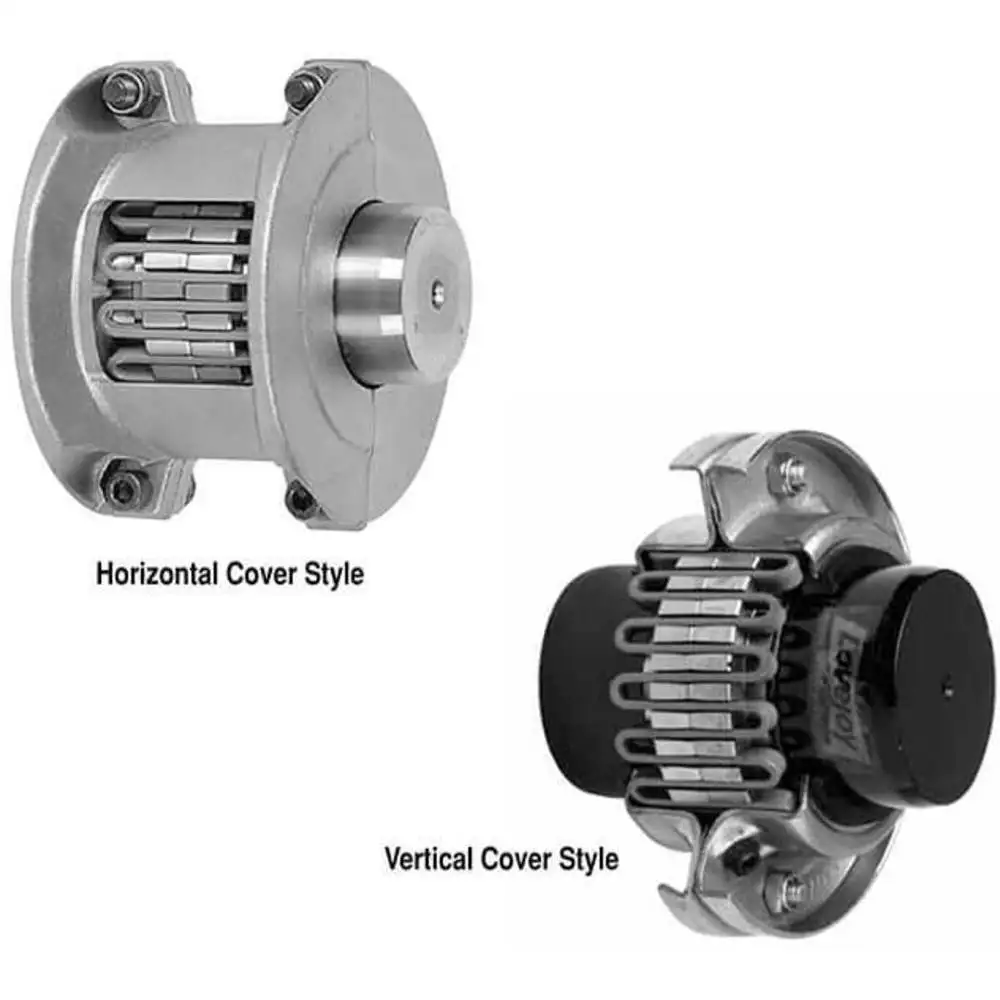Features:
- A grid coupling requires two units of Lovejoy grid shaft hubs, a metallic grid spring and a split cover kit (which includes two cover halves, gaskets, seals, and hardware).
- Lovejoy 69790405498 grid coupling hub is suitable for use in applications where the components are close coupled or slightly spaced apart (in the latter case it further requires a spacer-styled coupling arrangement).
- It features a shot-peened alloy steel grid spring that is interchangeable with other industry-standard grid couplings.
- This high-tensile hub facilitates rapid installation and easy maintenance to decrease downtime and costs.
- The body of this coupling hub is torsionally flexible and durable to decrease vibrations and impact loads.
- It allows adaptable stock components to be used with either vertical or horizontal covers.
Frequently Asked Questions:
Q. How to select a suitable Lovejoy grid coupling?
A.
- Torque or horsepower requirement of your application
- The driven equipment you intend to use - gear drive to conveyor or motor to pump
- Rotational speed (rpm) of the coupling
- Shaft diameters and gaps
- The type of finish, fit and any special bore requirement
Q. Do Lovejoy grid couplings require lubrication?
A. Yes. Lovejoy grid couplings have a metal-on-metal design for smooth power transmission & minimum coupling wear. To ensure these lubrication / greasing should be done at regular intervals to prevent metal wear caused by metal flexing & rubbing leads.
Q. What does the term key refer to in Lovejoy couplings?
A. Selected models of Lovejoy couplings have a keyway - a slot cut out from the mating part of the couplings. These slots fit into the keyway of the mating shafts. They facilitate improved torque & slippage prevention, along with reduced losses caused by vibration & backlash (degree of free movement between two rotating, mating parts).
Q. What is the difference between Lovejoy flexible & rigid couplings?
A. Lovejoy flexible couplings provide flexible connections between the shafts, accommodating minor misalignments with ease. On the other hand, rigid couplings connect two shafts firmly for transmitting maximum torque throughout the system. Rigid couplings cannot accommodate shaft misalignments.
Q. What are no-hub couplings used for?
A. No-hub couplings are designed to join cast iron soil pipe that does not feature the traditional hub and spigot. They are usually installed with a torque wrench and have more clamps with an improved band load than standard couplings.
 Change Country
Change Country

